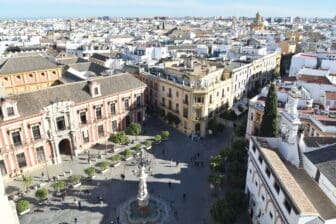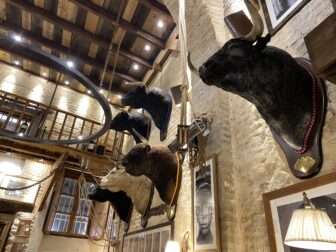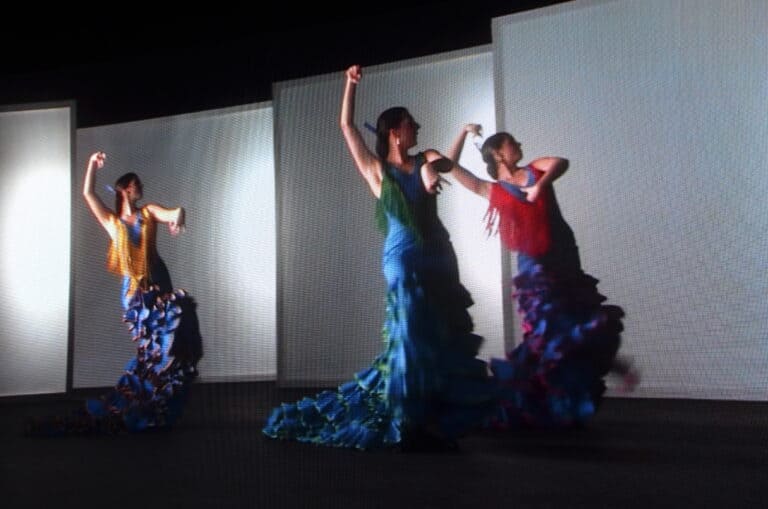
[Nov. 2021] Speaking of Andalusia in Spain, it is a mecca for flamenco.
Since we came to this region, flamenco was definitely one of the things we wanted to see, but this time we settled for the museum.
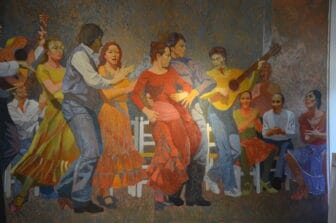
That is because it was written on the internet that flamenco performances are usually held in crowded venues where people eat and drink, and they could be the clusters of Covid-19.
If you want to see it, it seemed that they were doing the shows here and there in Seville.
So, to this Flamenco Museum.
Admission was € 10 per person and came with a pamphlet in each language.
When you buy a ticket and enter, you will first enter the flamenco theatre.
You can see flamenco shows every day at this museum as well.
After passing here and going upstairs, we entered a room showing the styles of flamenco in the video.
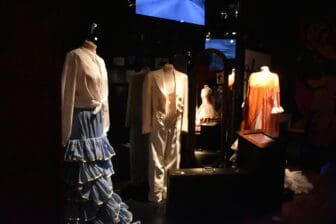
Here you can see dances that express each emotion, such as “joy,” “loneliness,” and “temptation.”
According to the pamphlet, the dancers on the screen are the masters in the country.
Well, I couldn’t tell the difference between the dances of “loneliness” and “passion”.
They are completely different emotions, though.
Also, there were rooms showing the history of flamenco, the transition of dance, etc.
Costumes and accessories, with a storyline, represented the footprints of flamenco from the 19th century to the present day.
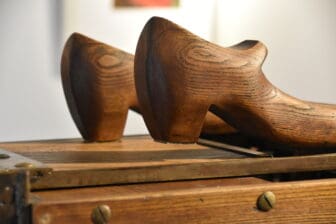
The top floor was an exhibition room for paintings and sculptures related to flamenco.
The wooden model that lets you hear the sound of flamenco shoes was interesting.
There was a cave-like space in the basement, where a man and a woman in gym clothes were practicing dance.
The woman was teaching the man.
It was quite powerful.
According to the pamphlet, they will also give lessons if you wish.
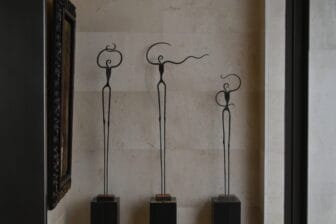
If you’re learning, I am sure you’ll want to practice at home of flamenco (I’ve taken ballet lessons in Kiev).
We also took a peek at the shop, but I didn’t find anything particularly appealing.
I suddenly noticed that there are folding fans as the representative of Spanish souvenirs, and many souvenir shops in the town sell them, but in flamenco you don’t dance with a folding fan, do you.
In the ballet I often see, Spanish dances often come with a folding fan, and it’s cool to see dancers opening and closing the folding fans quickly.
Where does the connection between Spain and the folding fan come from?
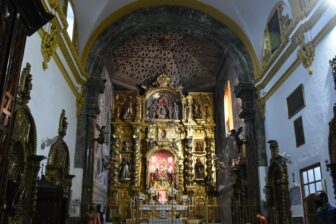
Well, a little after leaving the museum, we came across a church with a sober entrance, so we went in.
The altar was gorgeous.
The ceiling was Mudejar style.
Two people were praying inside the altar fence.
It was a church named Iglesia de Santa Maria de Jesus, which is also mentioned in the guidebook.

According to it, the building, which was originally a mosque, was converted into a church in the middle of the 13th century, and it is written that Columbus often came to pray.
Not only Columbus, but the people here seem to have a lot of religious spirit.
I saw religious paintings along the road, and also a veranda of ordinary people’s flat decorated like an altar.


